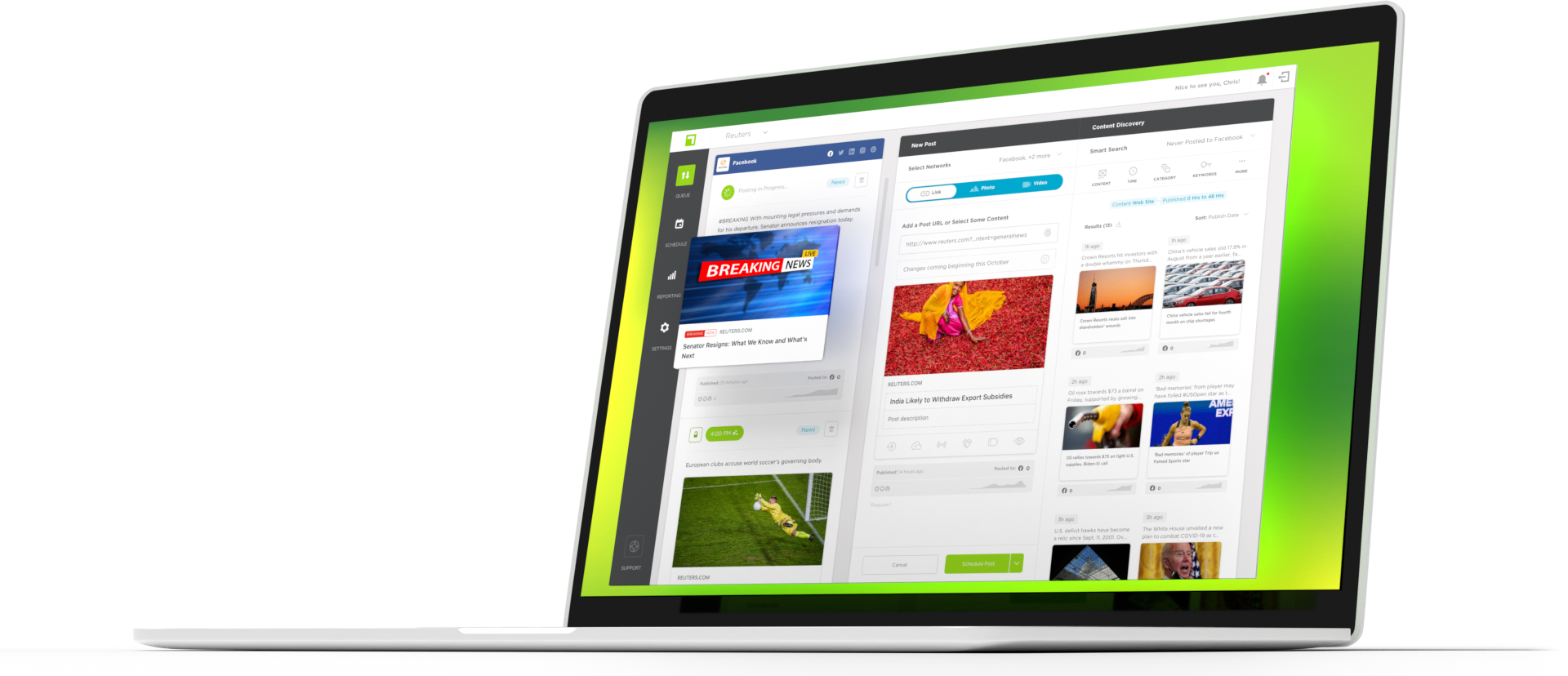Coming up with good content for social media platforms is hard. Really hard. You have to consider images, video, audio, captions, and make sure everything is engaging, on-brand, and of high quality. It’s a lot, right?
But it doesn’t stop there. How are you sharing it? Are you getting it to the right people? At the right time? How do you maximize the impact of your content on your existing platforms? Content distribution adds a new layer to content creation that you may not have considered, and you need to make sure your strategy is as effective as possible.
Here are several points to consider when getting your content out on social media platforms.
Consider the platform constraints
There are always limitations, and to create content that plays well on the platform, you need to know the specs. Image sizes, video length, and caption length are all significant. Here are some of the most critical points to consider:
- Character limits: Caption fields are different on every platform. Know what you’re working with. Here’s a guide that can help.
- Video length restrictions: Stories give you 15 seconds on Insta, 26 seconds on Facebook. Reels give you up to a minute. IGTV is 15 minutes, or even an hour if you’re uploading from the website. TikTok lengths vary, up to 3 minutes. You’re going to need to know what your target length is and what your cut-off is.
- Hashtag caps: Instagram doesn’t want you using more than 30, period. That may be a lot anyway. On Facebook, you probably want to avoid them altogether. Twitter recommends 1-2.
- Image aspect ratio: Image sizes vary across platforms. Check your sizing before you post!
Understand the tools available and how to use them
There is a difference between Reels, Stories, and Instagram Video. Facebook Stories and Video are not the same. You are going to want to treat them differently.
For example, if you’re creating Reels, you want to use trending sounds. They are meant to be short, engaging, and scrollable. If you’re sharing a Reel, you can also send those to Facebook now.
This is different from Instagram Video. This is the new packaging for IGTV and in-feed video, which are now treated the same way within Instagram’s universe.
Twitter has a litany of new tools they are developing/testing this year, including Spaces (audio rooms), Twitter Blue (paid subscription,) and Revue (a newsletter tool.)
Creating content for each area individually is time-intensive, but it is important to maximize each piece for each place.
Know the trends on social media platforms
Trends are a great way to grab some extra views. Even the largest bands jump on trend bandwagons. You want to make sure you understand the trend fully so you don’t end up making a DiGiorno’s level mistake, but it can be great for inspiring ideas and getting attention. Here are some tips:
- Put an industry relevant spin on an existing trend. What makes you different?
- Don’t try too hard. You don’t have to jump on every single trend.
- Follow hashtags and use them in your posts. They’re going to help you a lot.
Know your audience
This is arguably the most important part of the equation. You have to know who your content is for. This is something you should lock down before you even start the content creation process.
Know who you’re trying to reach, what they like, which platforms they’re on, and how to find them. Generate hashtag banks to join existing conversations. Study your analytics and know what content works and why. Understand when your audience is online to optimize post times. Or, you can take it a step further and get True Anthem to do this for you while we build out your custom AI social posting strategy.
If you consider all of these things, you’ll be setting yourself up for seriously effective social posting. The job doesn’t stop with content creation! Also, be sure to sign up for our newsletter to get up-to-date information on social media news, updates and tips.

